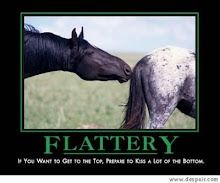We’ve got our clean horse, next is to prepare the clippers and the area we’re going to use. Having a broom handy is a must to remove the mountains of hair from underfoot as either you or your horse can slip.
Clippers are marvellous things, and it doesn’t take a rocket scientist to wield them, but it takes a little fore-thought and finesse to do a good job. The blades need to be sharp and put onto the clipper head very straight and with just enough tension in the screws to allow them to move freely from side to side without slipping. Too loose and they will slip diagonally or fly off during the clip – neither is a fun experience. Each type of clipper is different, and it’s a case of instruction, instructions, instructions.
Once the process has started make sure to check how hot your blades are getting. If you can’t touch them then chances are they are going to be hot to your horse as well. There are plenty of coolant sprays on the market, but by far the best thing I’ve used is kerosene. It’s available in a reduced smell variety and if you put it in a shallow dish you can run your blades in the kerosene which will both cool and clean them (make sure not to put them in too deep or it may damage the engine), follow up with a little clipper oil on the sides and top and you’re ready to continue.
There are plenty of little areas that can cause someone who is starting out on clipping a lot of problems. Flanks, elbows and the chest area are probably the worst among them. Just remember that skin is supple and should be able to be manoeuvred into a position to make, even if this means asking the horse to stand in a certain way, or to get someone to stretch out a leg, while using your hands to flatten any wrinkly bits out. If in doubt don’t clip to the skin, just go gently over the area, better there be too much hair than a little less skin and a lot more blood!
Heads can also be a big issue. The vibration of the clippers can be annoying to some horses, even frightening to other; they’re big, noisy and foreign. Try to use smaller clippers for horses who are worried, if they continue to be worried by these then maybe it’s time to twitch them, or possibly sedation may have to be used. There is a time when the use of a twitch is passed; once the horse has reached a point of fear there is not a lot that the twitch will do. It’s better to know your horse has a problem with getting a certain area clipped and be prepared so the job is easy and safe. I do believe it is a better experience for the horse to have a minimal amount of discomfort and have a happy endorphin rush as a response, than to be pulled and pushed around while someone swings around their head trying to clip them – safety for all involved should take priority. A quick and easy way to make a twitch is to grab an old snaffle bit and a bit of baling twine, make a hand sized loop out of the bailing twine and attach it to the ring of the snaffle. Once the baling twine twitch is on your horse then you can simply clip the other ring of the bit onto your halter using your lead ropes clip, this way it stays safely attached, and leaves both your hands free! Make sure not to leave them on for long, 5 or so minutes is about all the time you should need to quickly zip through these problem areas, any longer than that and maybe it’s time to think sedation rather than twitch.
Once it’s all over, hose any hair off your horse; give it an Alpha Keri Oil rinse and rug! Then run into the shower for yourself, there’s nothing as itchy as clipped horse hair stuck into your clothes.
When people ask for shit
8 years ago
